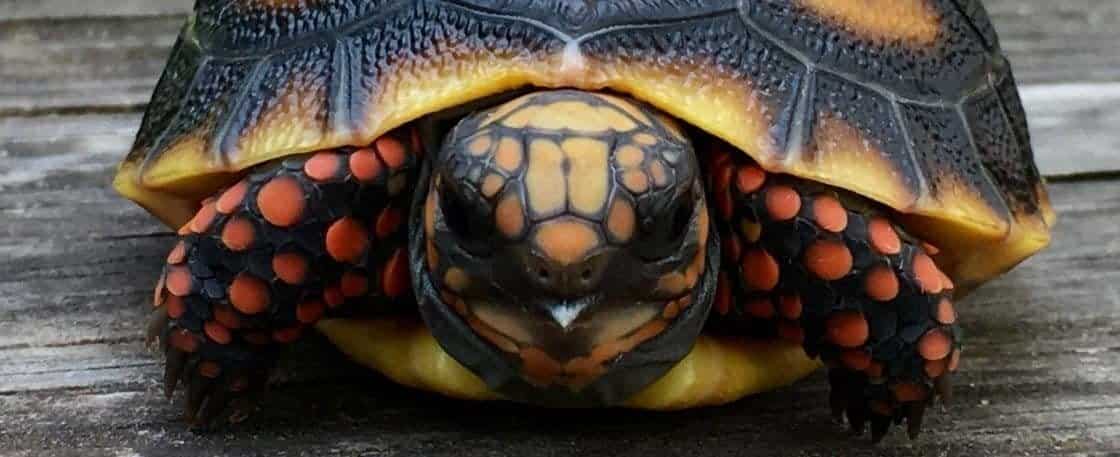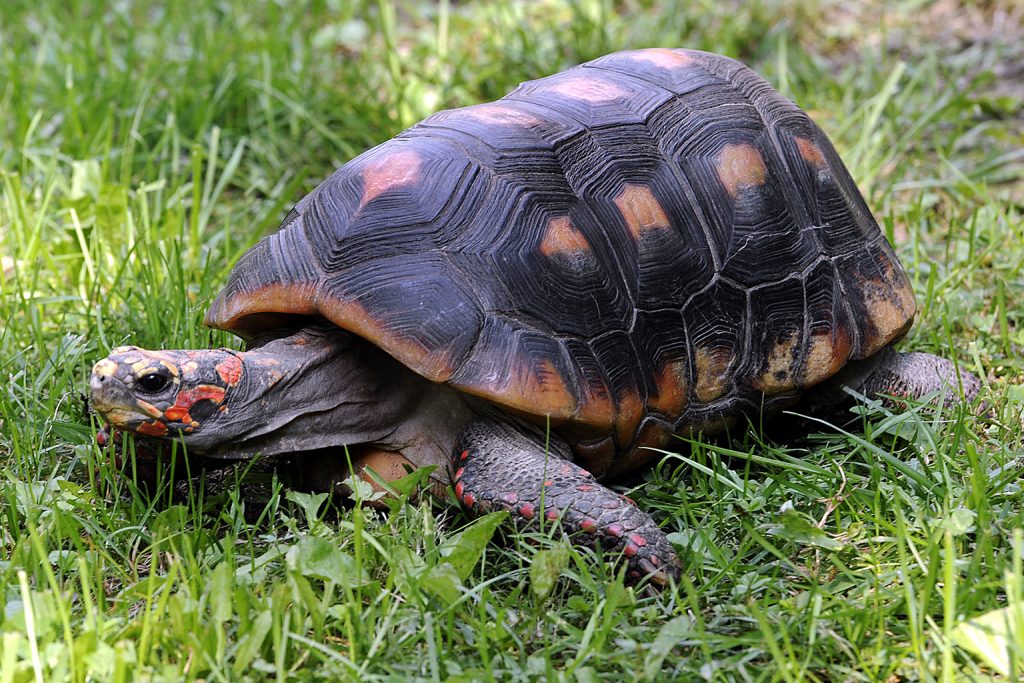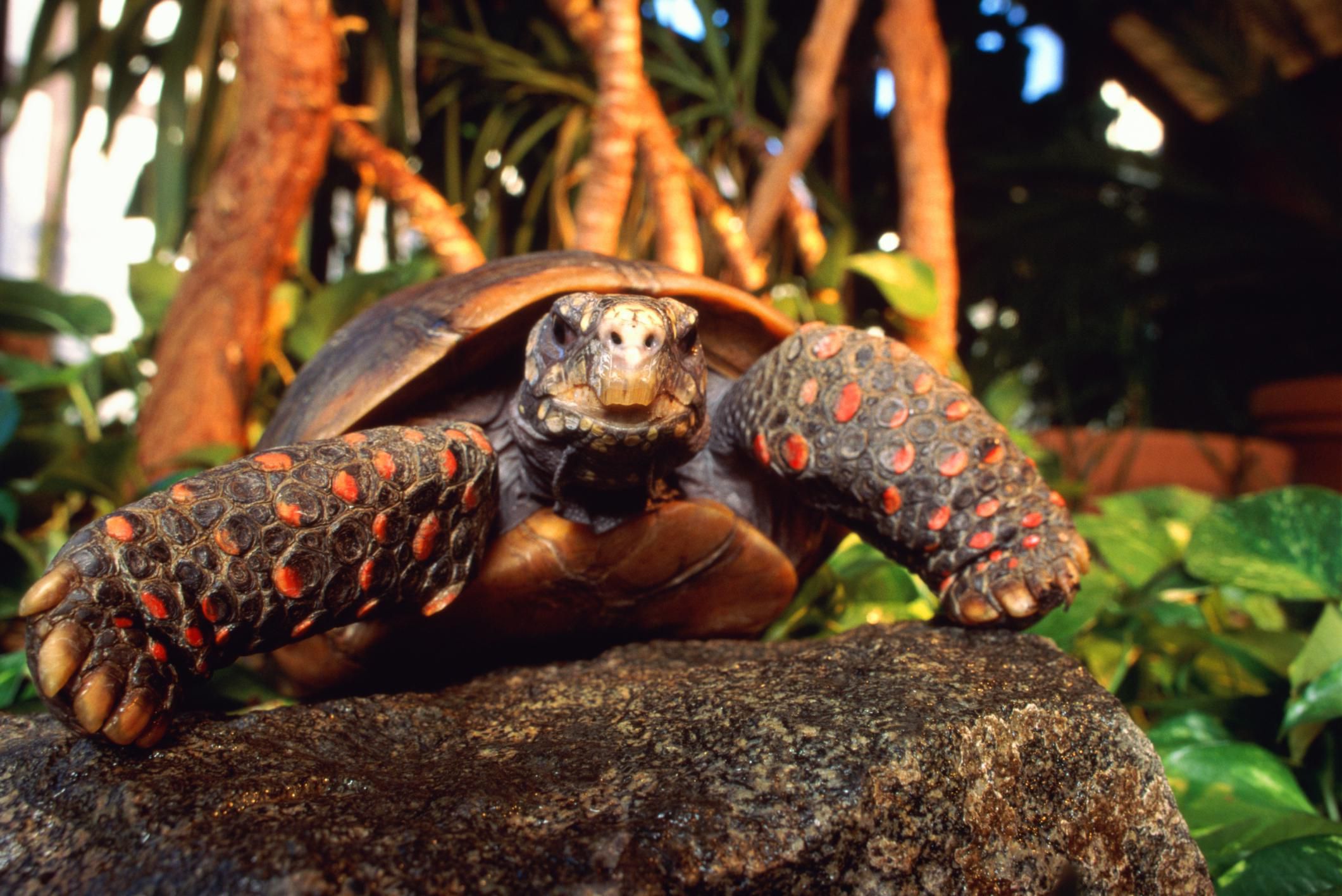 Red Footed Tortoises (Chelonoidis carbonarius), also known as Red Legged Tortoises, are popular pets
due to their attractive appearance and relatively manageable size. As a potential owner, it’s essential to
understand how big these tortoises get so that you can provide them with appropriate care and enclosure
space.
Red Footed Tortoises (Chelonoidis carbonarius), also known as Red Legged Tortoises, are popular pets
due to their attractive appearance and relatively manageable size. As a potential owner, it’s essential to
understand how big these tortoises get so that you can provide them with appropriate care and enclosure
space.

Credit: www.tortoisetown.com
Size and Growth Rate
Red Footed Tortoises are classified as moderate-sized tortoises compared to other species. On average, males grow to be around 12 to 16 inches (30 to 40 cm) long, while females can reach sizes of up to 16 to 20 inches (40 to 50 cm) in length. However, it’s crucial to note that individual growth rates can vary, and there can be outliers that surpass the average sizes.
Red Footed Tortoises have a slow growth rate, especially during their first few years of life. Hatchlings typically measure around 1 to 2 inches (2.5 to 5 cm) in length, and it can take several years for them to reach their full adult size. It’s important to monitor their growth and make adjustments to their enclosure as they grow to ensure they have enough space to move comfortably.

Credit: www.marylandzoo.org
Factors Affecting Growth
The growth rate of Red Footed Tortoises can depend on various factors, including genetics, diet, living conditions, and overall health. Providing a proper environment with adequate space, proper temperatures, and a balanced diet is crucial for healthy growth.
The diet of Red Footed Tortoises consists primarily of fruits, vegetables, and leafy greens. Offering a variety of these foods ensures they receive the necessary nutrients for growth. Calcium supplementation is also vital to prevent metabolic bone disease and promote healthy shell development.
Red Footed Tortoises require a spacious enclosure that allows them to move around freely. For hatchlings, a 20-gallon enclosure may be sufficient initially, but as they grow, a larger space or even an outdoor enclosure is recommended. It’s important to provide areas for basking, hiding, and enough substrate for digging and burrowing.
Caring for Your Red Footed Tortoise
Taking care of a Red Footed Tortoise involves more than just knowing their growth rate. Here are some essential care tips to ensure the optimal health and well-being of your pet tortoise:
- Provide a suitable enclosure with enough space and appropriate environmental conditions.
- Ensure a temperature gradient within the enclosure, including a basking area with a heat source.
- Offer a varied diet consisting of vegetables, fruits, and leafy greens.
- Supplement their diet with calcium and provide a cuttlebone for additional calcium intake.
- Keep their enclosure clean to prevent the buildup of bacteria and parasites.
- Allow for regular exercise and exploration outside the enclosure (supervised in a safe area).
- Regularly monitor their growth and consult a reptile veterinarian for any health concerns.
By providing proper care, a suitable environment, and monitoring their growth, you can ensure that your Red Footed Tortoise thrives and reaches its full potential size. Remember, tortoises are long-lived animals that require a commitment of time and resources, so be prepared for the responsibility before bringing one into your home.





Leave a Reply